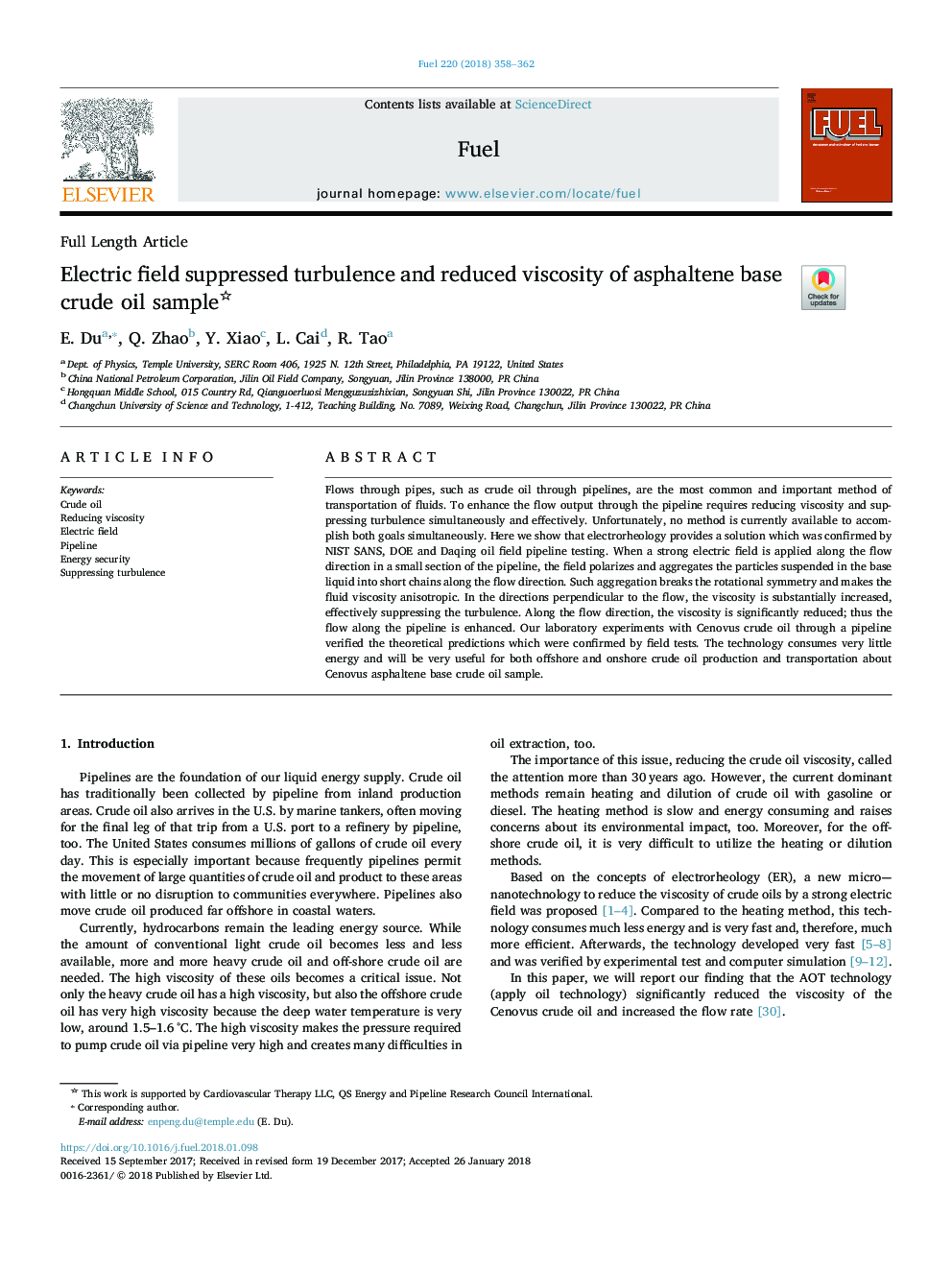| Article ID | Journal | Published Year | Pages | File Type |
|---|---|---|---|---|
| 6631675 | Fuel | 2018 | 5 Pages |
Abstract
Flows through pipes, such as crude oil through pipelines, are the most common and important method of transportation of fluids. To enhance the flow output through the pipeline requires reducing viscosity and suppressing turbulence simultaneously and effectively. Unfortunately, no method is currently available to accomplish both goals simultaneously. Here we show that electrorheology provides a solution which was confirmed by NIST SANS, DOE and Daqing oil field pipeline testing. When a strong electric field is applied along the flow direction in a small section of the pipeline, the field polarizes and aggregates the particles suspended in the base liquid into short chains along the flow direction. Such aggregation breaks the rotational symmetry and makes the fluid viscosity anisotropic. In the directions perpendicular to the flow, the viscosity is substantially increased, effectively suppressing the turbulence. Along the flow direction, the viscosity is significantly reduced; thus the flow along the pipeline is enhanced. Our laboratory experiments with Cenovus crude oil through a pipeline verified the theoretical predictions which were confirmed by field tests. The technology consumes very little energy and will be very useful for both offshore and onshore crude oil production and transportation about Cenovus asphaltene base crude oil sample.
Related Topics
Physical Sciences and Engineering
Chemical Engineering
Chemical Engineering (General)
Authors
E. Du, Q. Zhao, Y. Xiao, L. Cai, R. Tao,
